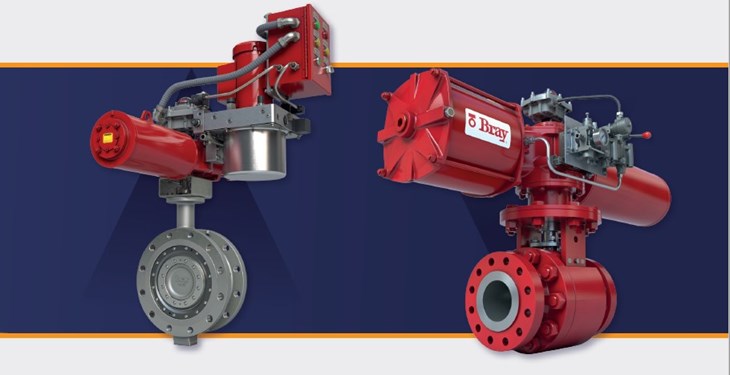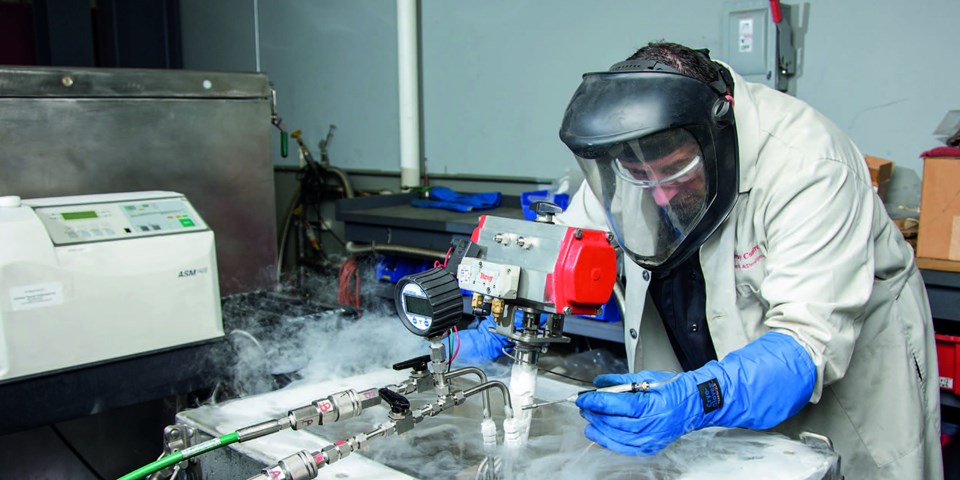By Sara Mathov
Bray’s Mission to Make a Generational Impact
“In any application, customers need to operate in a safe, environmentally friendly, and profitable way,” said Brindesh. “That is why Bray will continue to provide technology and solutions to help our customers with their emission goals, while operating in difficult conditions. This is true whether it is a butterfly valve for a cryogenic application, a knife gate valve for slurry transport, a ball valve in a refinery, or a high torque actuator for remote pipelines.”
Bray goes much further than its operational footprint and manufacturing capabilities when it comes to providing solutions to customers that will decrease emissions. “Our focus is not just how we operate as a manufacturer, but rather how we can empower our customers to do the same,” stated John.
“Bray is committed in addressing the environmental challenges of our day. We see this as an opportunity to make a generational impact. If we are going to make a difference then not only do we have to continue to do our part, but we must work with our customers, partners, and suppliers, everyday, towards the goals of zero emissions and net-zero carbon. We must do our part to take care of our planet and reduce the burden on future generations,” added Brindesh.
The company has enabled its team members, customers, and community to understand and act upon environmental and sustainability initiatives. While regulations are being discussed, Bray’s technical leaders actively participate in various committees around the world to help improve industry standards and expectations. “Bray has proven itself as a reliable partner through direct relationships with end users and thorough knowledge of the supply chain. We understand the commercially available technologies and work to develop new technologies needed by end users. We actively work with vendors to position our products to exceed industry requirements,” said Mitch.

Addressing the Environmental Challenge
For example, Bray’s Application Engineers work directly with end users to properly design large electro-hydraulic actuators for pipeline valves. Vent emissions from methane production are currently one of the primary sources of fugitive emissions; they are generated from equipment operated by natural gas. In remote applications, such as pipeline valves, the valves are actuated by direct natural gas, which can end up in the atmosphere. Bray’s deployment of their electrohydraulic actuator line in remote areas are helping their customers to replace gas drives. “Despite what may have been common practice, using clean and effective technology, such as electric and solar power, can efficiently operate larger valves,” explained John. “By using cleaner technology, we can transition away from older technologies and create a more sustainable footprint. We are reducing the size of the packaged footprint from older, less efficient technologies, as well as the amount of exhaust being released, by implementing these cleaner practices.”
Bray’s products and technologies help customers improve performance while reducing their carbon footprint. Bray’s technology leadership is helping to drive the industry towards achieving the net-zero vision.
“Our efforts go beyond simply achieving an API641 or an ISO15848 certification. We must put ourselves in our customer’s shoes and be far more ambitious if we are ever going to achieve zero emissions”, said Brindesh. “We approach these grand challenges from multiple directions; we manufacture valve solutions to minimize fugitive emissions, we proactively monitor emissions with our patented technology, and we reduce our overall carbon footprint. This includes improving our legacy products to be more efficient, not just in cost, but in terms of sustainability.”

Power of Digitization
Increasing efficiency of actuators and efficiency of valves by reducing torque requirements, are things that Bray focuses on to reduce power consumption while improving cycle life. “When we design valves, we do not focus on just standards, but the entire system; we want to provide an integrated, complete solution,” said John.
While Bray designs, manufactures, and certifies its products to industry standards, it also recognizes that those are often one-time qualifications. “We do not believe that a low-emissions test is a one-time test. We go beyond those requirements by ensuring that the low emissions capability of the product lasts though the entire lifecycle of the product. We do the full emissions testing for a new product, but we also put it through its lifecycle and periodically measure the emissions from that product, to ensure that the requirements are met throughout its entire life; we also do it periodically by randomly selecting products from batches,” said Brindesh.
Bray continues this extensive testing by offering any additional functional tests that a customer may require. “We will do any type of testing needed, at any point, because this is in the DNA of the design work and expectations we have at Bray,” said John.
Bray also has a very robust supplier qualification process to ensure that suppliers meet very high specifications for safety and environmental standards. “On the operation side, we maintain focus on energy efficiency. Minimizing wastewater, and leftover scraps, are some ways we do this,” said Brindesh. “The digitization of our company continues to expand into the factory side, by using monitoring tools and having a high awareness of the amount of energy we use.”

“I believe we can accelerate towards zero emissions through digitization,” continued Brindesh. “Developing technologies to actively monitor emissions is a great example, and that is going to continue. We strive to stay ahead of what the standards require, to achieve outstanding performance of our products.”
There is a transition occurring right now. As we all consume more data, data centers are growing and the energy required to operate them provide us with an opportunity to produce efficient solutions,” added John. “Historically, emissions were thought of in a specific manner, such as power plant, chemical plant, but we recognize it is about the big picture. Customers that we work with on a day-to-day basis need the efficiency of the complete package to reduce their impact. The future of reducing emissions will be about maximizing efficiency in the overall solution and system,” he concluded.


